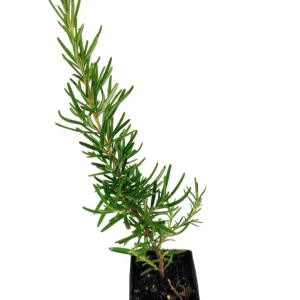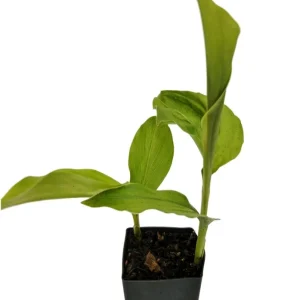Description
Turmeric (Curcuma longa) is a remarkable plant that offers a wide range of benefits for gardeners, health enthusiasts, and culinary adventurers alike. This perennial herbaceous plant, native to Southeast Asia, is well-known for its vibrant golden rhizomes and its numerous uses in traditional medicine, cooking, and even survival situations.
Usually available: December to March
Life cycle: Herbaceous perennial
Height: 1 – 1.5m
Position: Part shade
Soil preference: Well drained
Garden Use and Growing Conditions
Turmeric is a beautiful addition to any garden, with its lush green leaves and stunning white or pink flowers. In Australia, turmeric thrives in warm, humid climates such as those found in Queensland, Northern New South Wales, and the Northern Territory. It prefers well-draining soil, partial shade, and protection from strong winds. Turmeric grows well alongside other tropical plants like ginger, galangal, and cardamom.
Medicinal Use and Traditional Uses
For centuries, turmeric has been used in traditional Ayurvedic and Chinese medicine to treat various ailments. The active compound in turmeric, curcumin, is known for its potent anti-inflammatory, antioxidant, and antimicrobial properties. Studies have shown that curcumin may help alleviate symptoms of arthritis, improve brain function, and even reduce the risk of heart disease and certain cancers.
Culinary Use
Turmeric is a staple ingredient in many Asian cuisines, particularly in Indian and Middle Eastern dishes. Its warm, slightly bitter, and earthy flavor adds depth and complexity to curries, stews, soups, and rice dishes. Turmeric is also used to make the popular golden milk, a comforting and nourishing beverage that combines turmeric, milk, and other spices like cinnamon and ginger.
Other Uses
Beyond its culinary and medicinal applications, turmeric has been used for centuries as a natural dye for textiles, thanks to its vibrant yellow color. It is also used in cosmetics and skincare products for its anti-inflammatory and skin-brightening properties.
In a survival situation, turmeric can be an invaluable resource. Its medicinal properties can help boost the immune system, reduce inflammation, and promote healing of wounds and infections. Turmeric’s ability to grow in various conditions and its easy propagation from rhizomes make it a reliable food source in an emergency.
Interesting Facts and Gardening Tips
- Turmeric is related to ginger and cardamom, all belonging to the Zingiberaceae family.
- The plant can grow up to 1 meter tall and has long, lance-shaped leaves.
- Turmeric prefers a soil pH between 5.5 and 6.5 and requires consistent moisture during the growing season.
- Harvest turmeric rhizomes 8-10 months after planting when the leaves begin to yellow and dry out.
By adding turmeric to your garden, you’ll not only enjoy its beauty and versatility but also reap the numerous health benefits this incredible plant has to offer.





Reviews
There are no reviews yet.